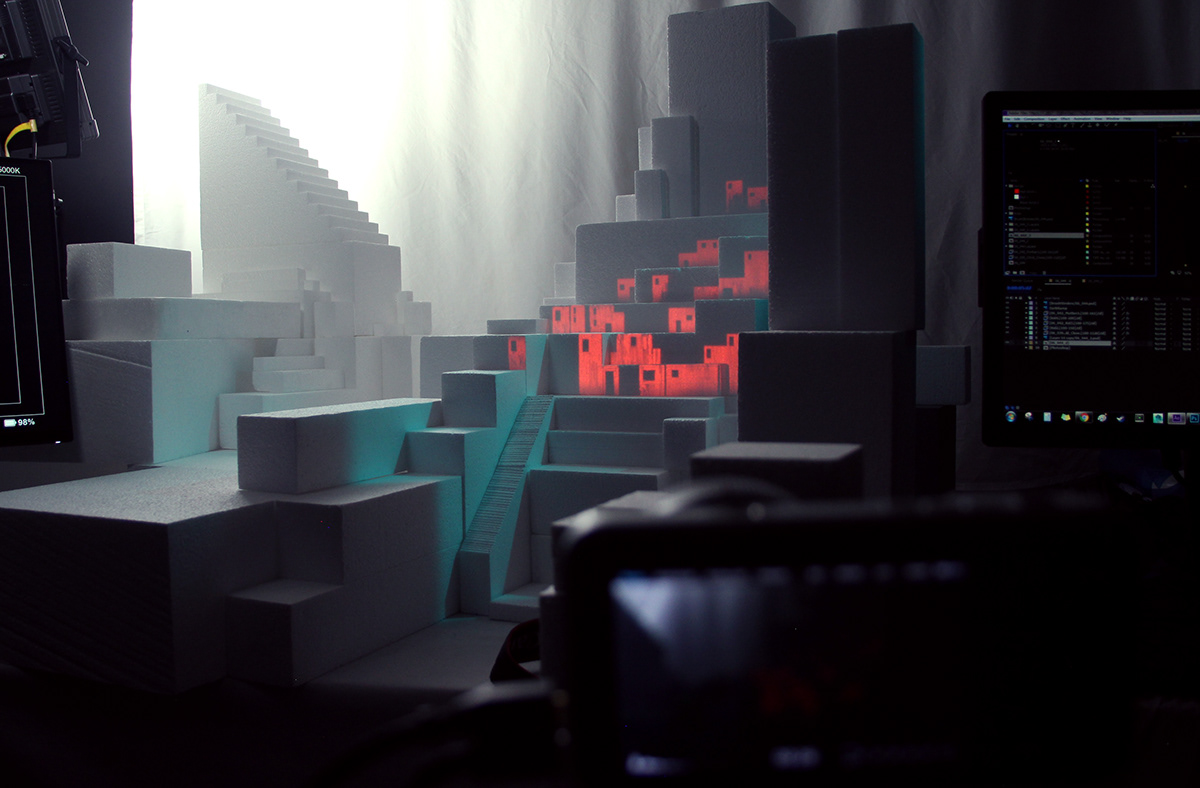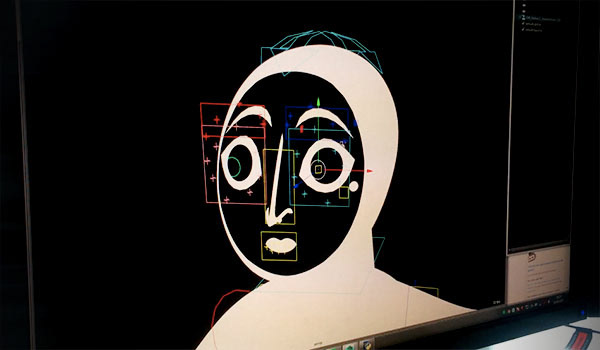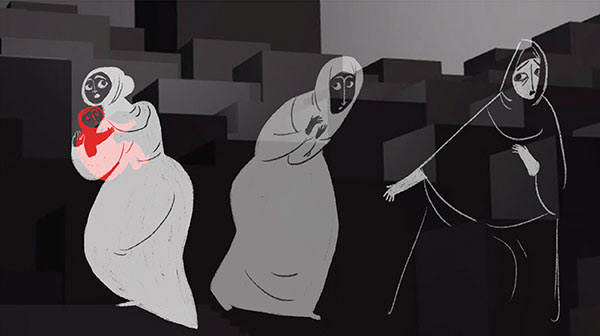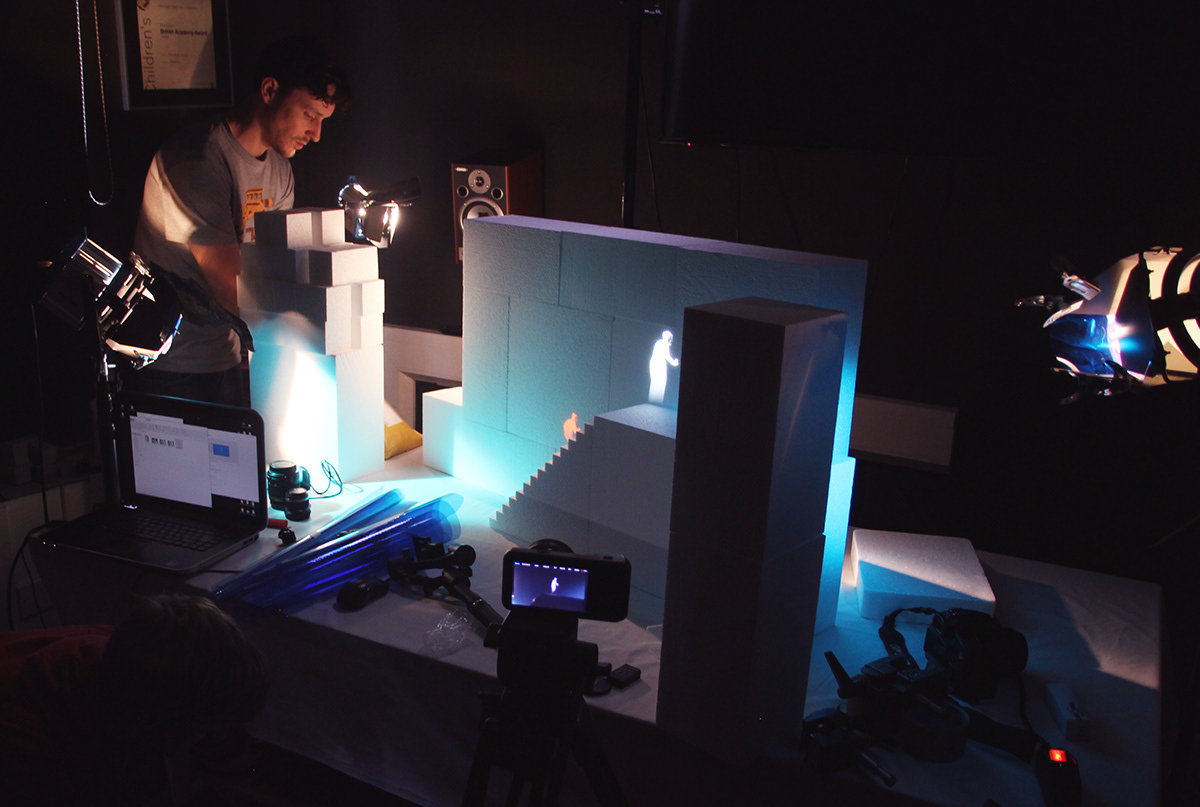Mamoon
Introducing Mamoon, a haunting animation inspired by the horrific plight of refugees fleeing Syria’s civil war. Mamoon follows the story of a mother and child whose lives descend into darkness when the moon mysteriously loses it’s light. As their own light begins to fade, the mother must work out how to save her child using a mysterious red glow.

Mamoon is the brainchild of Blue Zoo’s Senior Animation Director Ben Steer, who’s response to the company’s shorts programme won the heart of Blue Zooers who voted his idea into production. The brief was to create an emotional, human story, with the proviso that the characters be animated in Maya and then projected and filmed. Ben took a truly experimental path to produce the film, projecting animated characters onto 3D sets crafted from polystyrene blocks.

How it was made
Ben built miniature, bespoke sets using a modular design that could be reused for multiple shots. Initially using wooden blocks, the footage looked surprisingly computer generated and lacked the tactile feel we were trying to achieve. This is where the polystyrene came in; the microscopic pores in the surfaces caused the light to bleed into the blocks, giving the impression that light was coming from within the structure.
In order to ensure the shots would work in the physical space, Ben mocked-up the sets in Maya using virtual cameras and simple cuboids, before sketching on the characters in Photoshop. This way, he could present his ideas giving a good impression of what the resulting footage might look like.
The characters were designed to be 2.5D, so were fully 3D but designed only to be rendered flat shaded mostly in silhouettes. The characters were modelled and rigged in Maya.


The animation process required a different approach to our usual methods. Animating without depth allowed us to shape and break the model in order to create better silhouettes. Normally we would animate to the exact length of a shot and, when the shot is finished, the animation ends. On numerous shots in Mamoon, an entire animated sequence would play out in real-time before being filmed from multiple angles, affording us greater freedom in the final edit.

For each shot, the set would be physically built in its rough form then photographed from the intended camera angles for reference. The photo would then be used as a backdrop in Maya for character blocking and placement. Once animation was complete, the set would be rebuilt and the important elements would be mapped out using a projector and Photoshop. The resulting Photoshop image would then be put into After Effects and layered up with the animation, which was then aligned to the set elements to create the finished projected sequence.

The tools
For the camera we used a Blackmagic Pocket Cinema which was affordable and great at capturing raw, uncompressed HD footage we could heavily grade without artefacts. We wanted a handheld feel to give it a slightly organic, documentary-style cinematography, rather than pre-calculated animation.
To light the set we used the same techniques employed on stop-motion sets - a combination of small, dimmable dedo lights with barn doors and black wrap, with tinted gels for smaller pools of coloured light and LED panel lights for larger, ambient sources of light.




Mamoon has had great success on the festival circuit winning several awards and a BAFTA nomination. It will be available to watch on Vimeo soon, and in the meantime here's a little taster of what it's all about.
Credits:
Director: Ben Steer
Original Music: Matthew Wilcock for Zelig Sound
Animation: Phil Brooks, Ben Steer
Additional Animation: Ricky Honmong, Sarah Caisley, Simon Taylor, Steve Kimbrey
Compositing: Negar Bagheri, Elaine Thomas
Character Design: Marylou Mao
Rigging: Leo Blackmur
Modelling: Leo Blackmur, Lee Bowditch
Production Manager: Lizzie Hicks
Producer: Tom Box

